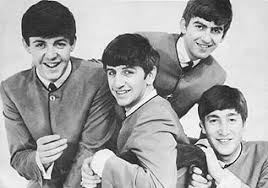BA4 Reflective Journal
Week 4
Toiling
To carry on from last week, I drew on from my adapted sleeve patterns and front and back blocks onto calico and made up my third toile of half a jacket:
After wearing it myself, I was really pleased that the sleeves fit much better around the underarm, so with that I made the other half.
100 Years of Menswear
For the rest of the week, I wanted to concentrate on finishing my research, so I looked even further into menswear over the century so as to compare traditional British tailoring with more modern looks.
Using the book, 100 years of menswear, I recapped on early 20th century dress very similar to late 19th century dress where they would all still wear frock coats, morning suits and military overcoats.
But, later on the style changed a little before, during and post war, as fashion became more about practicality and function rather than fashion and how it looked, due to a shortage of materials and the economy being in shatters. Cheaper fabrics like jersey were used in sportswear as well as more synthetic materials being used in conjunction with natural fibres, as they were cheap to source and manufacture.
The second world war had an even bigger impact on men's fashion, as this this is where military wear really influence the way of dress. For instance, the bomber jacket influenced casual wear and aviators were a big hit as a fashion accessory. Its said that this military influence led on to the tough guy image, seen in leather jackets and the trench coat.
The leather jacket was thought to be based on WWII coats with it stiff structure and inclusion of epaulets on the shoulder and button details down the collar and lapels.
 The trench coat was seen as a STAPLE MALE GARMENT and was associated with gritty underworld activities and lower class fashion.
The trench coat was seen as a STAPLE MALE GARMENT and was associated with gritty underworld activities and lower class fashion.By the 50's, fashion was more self-conscious and about looking 'cool', with the influence of films like Blue Brothers, suits were once back in with fedora hats and cool shades like aviators and wayfarers. Also at the time, there was a lot of political uproar with the youngsters due to the lack of government action to get the economy back up and running, which led to political protest amongst groups dressing differently. Such as the Teddy Boys- who dressed in reference to the dandies of the Edwardian era, with drape coats, velvet trim collars, drainpipe trousers, creepers and dark shades.
Elsewhere in Europe Italian tailoring was beginning to take its toll on London Saville Row, as this was something new - "The Continental Style". British style was getting some competition.
The 60's and 70's were more colourful and adventurous in their clothing as it was all about expression and art. This is when the likes of the Beatles and the Mods came into play. Mods were associated with parkas and scooters, whereas the Beatles brought about the collarless jacket. 

Later on in the 60'sand into the 70's, pop stars like David Bowie, Mick Jagger and Jimi Hendrix brought an element of new music into their fashion. It was more about psychedelic prints and patterns and incorporating unlikely objects into fashion (bricolage).
Late 70's involved many different youth subcultures such as Skinheads (influence from 60's mods, troublemakers, denim, off white, two tonic colours, DMs), new mods (more authentic, continental styled suits, narrow ties, loafers and white socks) and most importantly gay, subcultural dress.
This was the beginning of a new social age where prejudice was reduced and everyone was more accepting. Pop stars like David Bowie and icons like boy George (London Gay Scene) brought in male fashion with an element of femininity or "camp". This led to looks such as Goths (combine punk with occult overtones) and New Romantics, Punk and leather fetishism amongst the butch gay community.

Towards the end of the century, fashion became even more less about gender stereotypes and moved closer towards androgyny and unisex. Japanese designers, in the 90's, started to produce minimalist looks that were over sized and had no fitted shape - deconstruction.

The "heritage" look was being reintroduced where traditional tailoring was being favoured again, with the likes of Ralph Lauren and Paul Smith making it a more important element in designer menswear. However, Dries Van Noten (Antwerp 6) gives the British tailor a modern twist with contrasting patterns at different slants.
Today's fashion is not typical and particular in any way, whereas it is more about a combination of looks drawn on from the fashion of the last century, or even further back.





No comments:
Post a Comment